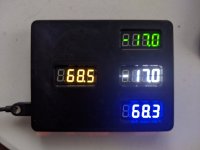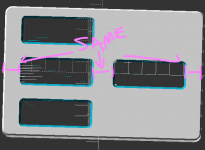I've added a
simple wiring diagram and parts list to the github README. It is just two parts so it is pretty easy to put together.
- Wire 5V from the Wemos D1 Mini to the 5V pin on all 4 LED displays.
- Wire GND from the Wemos D1 Mini to the GND pin on all 4 LED displays.
- Wire D1 from the Wemos D1 Mini to the CLK pin on all 4 LED displays.
- Wire D2 from the Wemos D1 Mini to DIO on the PIT display
- Wire D7 from the Wemos D1 Mini to DIO on the FOOD1 display
- Wire D6 from the Wemos D1 Mini to DIO on the FOOD2 display
- Wire D5 from the Wemos D1 Mini to DIO on the FOOD3 display
That might look like a lot of steps but that's all the wires you'll need total so it isn't much. Wire all the 5V, GND, and CLK together, then just one wire per LED module.



